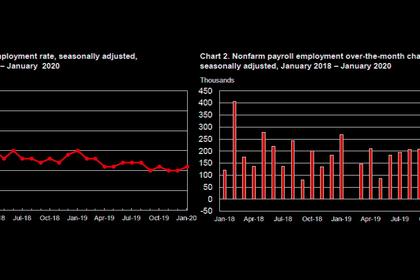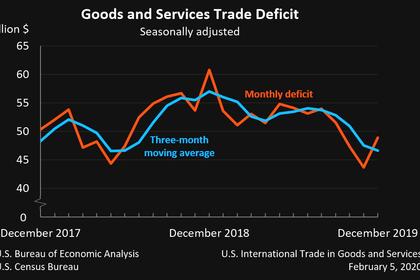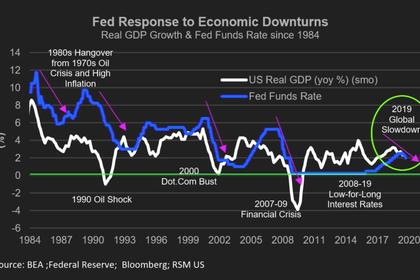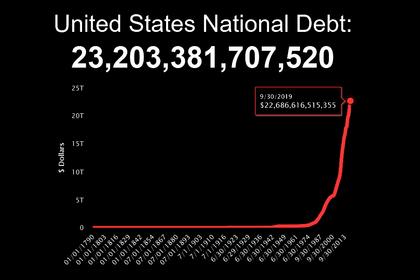
U.S. GDP UP 2.1%

U.S. BEA - February 27, 2020 - Real gross domestic product (GDP) increased at an annual rate of 2.1 percent in the fourth quarter of 2019 (table 1), according to the "second" estimate released by the Bureau of Economic Analysis. In the third quarter, real GDP also increased 2.1 percent.
The GDP estimate released today is based on more complete source data than were available for the "advance" estimate issued last month. In the advance estimate, the increase in real GDP was also 2.1 percent. In the second estimate, an upward revision to private inventory investment was offset by a downward revision to nonresidential fixed investment (see "Updates to GDP" on page 2).
The increase in real GDP in the fourth quarter reflected positive contributions from personal consumption expenditures (PCE), federal government spending, exports, residential fixed investment, and state and local government spending that were partly offset by negative contributions from private inventory investment and nonresidential fixed investment. Imports, which are a subtraction in the calculation of GDP, decreased (table 2).
Real GDP growth in the fourth quarter was the same as that in the third. In the fourth quarter, a downturn in imports and an acceleration in government spending were offset by a larger decrease in private inventory investment and a slowdown in PCE.
Current-dollar GDP increased 3.5 percent, or $184.2 billion, in the fourth quarter to a level of $21.73 trillion. In the third quarter, GDP increased 3.8 percent, or $202.3 billion (tables 1 and 3).
The price index for gross domestic purchases increased 1.4 percent in the fourth quarter, the same increase as in the third quarter (table 4). The PCE price index increased 1.3 percent, compared with an increase of 1.5 percent. Excluding food and energy prices, the PCE price index increased 1.2 percent, compared with an increase of 2.1 percent.
2019 GDP
Real GDP increased 2.3 percent in 2019 (from the 2018 annual level to the 2019 annual level), compared with an increase of 2.9 percent in 2018 (table 1).
The increase in real GDP in 2019 reflected positive contributions from PCE, nonresidential fixed investment, federal government spending, state and local government spending, and private inventory investment that were partly offset by a negative contribution from residential fixed investment. Imports increased (table 2).
The deceleration in real GDP in 2019, compared to 2018, primarily reflected decelerations in nonresidential fixed investment and PCE, which were partly offset by accelerations in both state and local and federal government spending. Imports increased less in 2019 than in 2018.
Current-dollar GDP increased 4.1 percent, or $846.9 billion, in 2019 to a level of $21.43 trillion, compared with an increase of 5.4 percent, or $1,060.8 billion, in 2018 (tables 1 and 3).
The price index for gross domestic purchases increased 1.5 percent in 2019, compared with an increase of 2.4 percent in 2018 (table 4). The PCE price index increased 1.4 percent, compared with an increase of 2.1 percent. Excluding food and energy prices, the PCE price index increased 1.6 percent, compared with an increase of 1.9 percent (table 4).
Measured from the fourth quarter of 2018 to the fourth quarter of 2019, real GDP increased 2.3 percent during the period. That compared with an increase of 2.5 percent during 2018. The price index for gross domestic purchases, as measured from the fourth quarter of 2018 to the fourth quarter of 2019, increased 1.4 percent during 2019. That compared with an increase of 2.2 percent during 2018. The PCE price index increased 1.4 percent, compared with an increase of 1.9 percent. Excluding food and energy, the PCE price index increased 1.6 percent, compared with an increase of 1.9 percent (table 6).
-----
Earlier:














